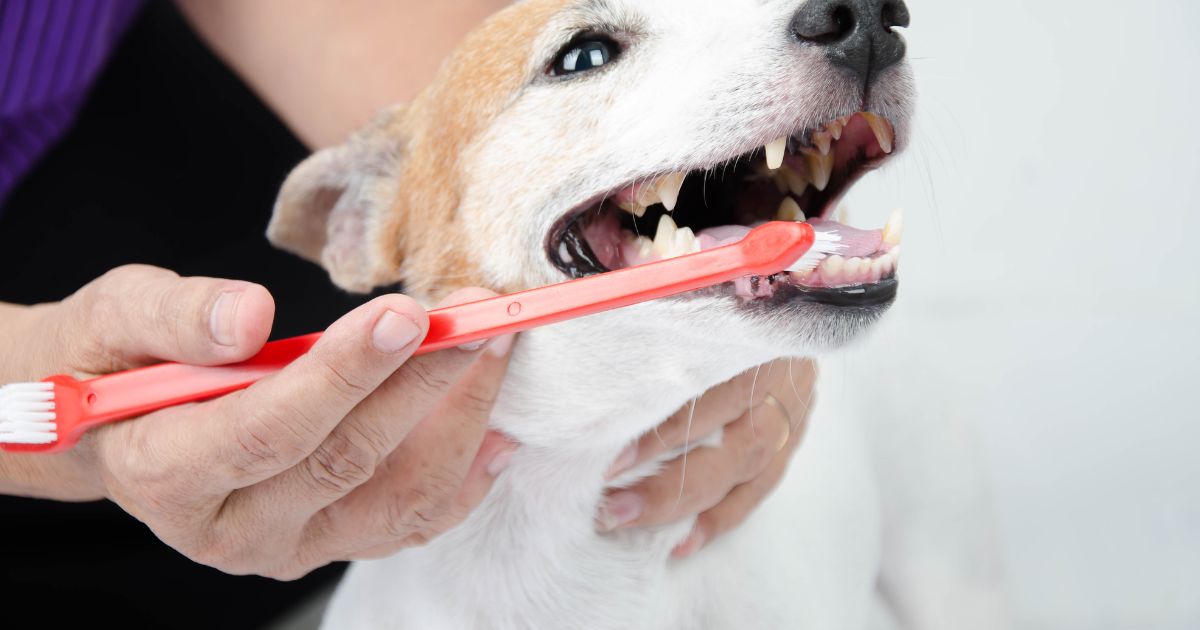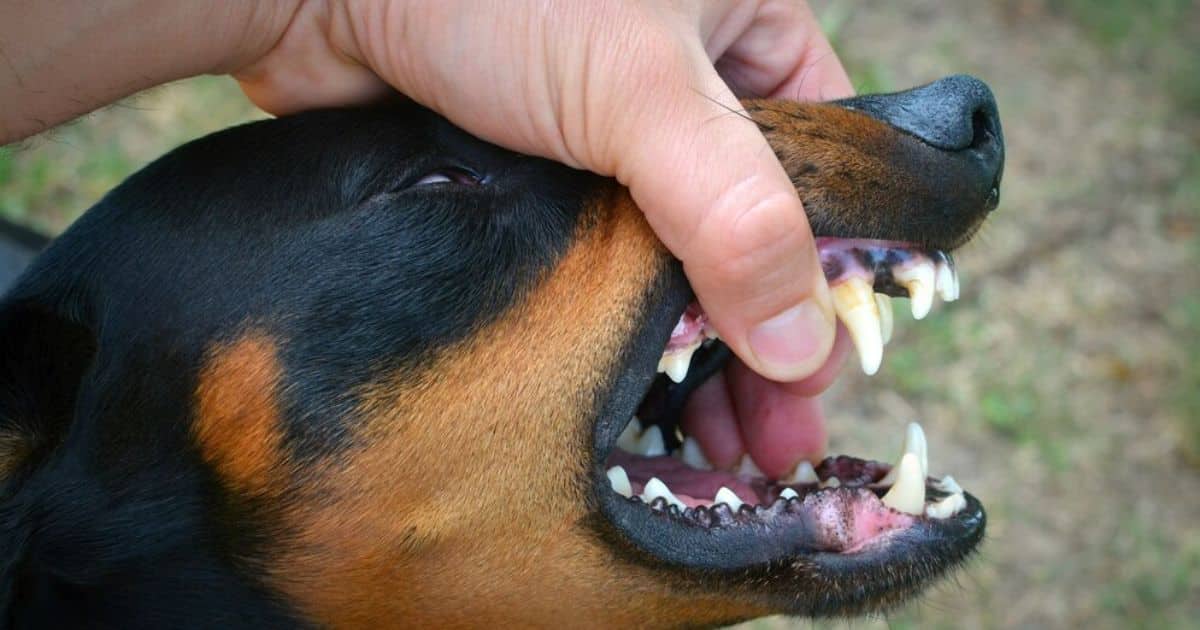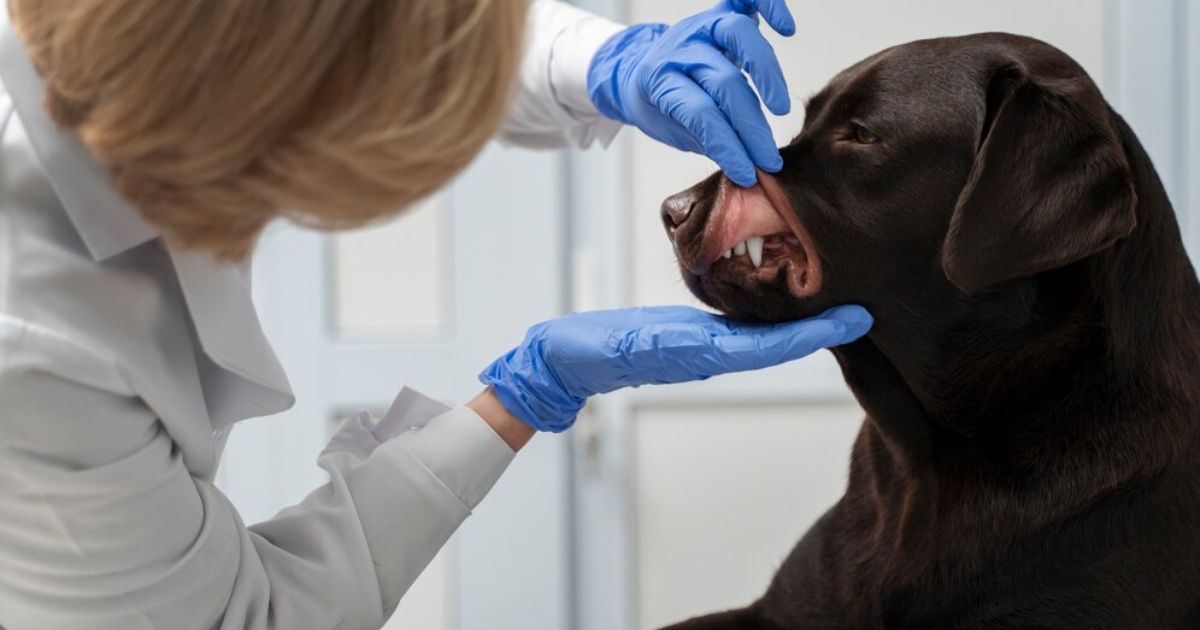Dog Bleeding Gums Home Treatment
If your dog’s gums are bleeding, there are some first aid steps you can try at home before taking them to the vet. Gently rinse their mouth with a saltwater or antiseptic mouthwash solution to flush out and clean the area where the gums are bleeding. This can remove any stuck debris or material that may be irritating the gum area.
You can also apply a cold compress or an ice pack wrapped in a towel to the outside of your dog’s muzzle for 10-15 minutes at a time. This will help reduce inflammation and swelling of irritated gums. Just be careful not to inhibit breathing. Also, switch to only soft food, remove all chew toys and bones, and monitor your dog closely over the next few days looking for improvement or worsening of gum bleeding. Seek prompt veterinary attention if bleeding continues or gets heavier despite home treatment.
Is It Normal For Dogs Gums To Bleed When Brushing Teeth

When brushing a dog’s teeth, it is generally not normal for their gums to typically bleed, indicating some kind of irritation, infection, or disease may be present. Healthy gum tissue should not bleed when gentle tooth brushing occurs. If bleeding happens continually, it usually signifies advanced periodontal disease affecting tooth sockets, gum inflammation from bacteria overgrowth, injury from brushing too hard, or abnormal masses on the gums.
Since bleeding gums are not a normal finding when maintaining good oral hygiene on a dog, you should have your veterinarian examine your dog’s mouth if you notice repeated bleeding episodes when attempting to brush. Testing and dental x-rays can determine if diseased tooth roots, bone loss near gum lines, tumorous growths or simple tissue irritation are causing the bleeding so that proper treatment can be initiated right away.
Is It Normal for Dog’s Gums to Bleed While Chewing on a Bone?
No, it would not be considered normal for a dog to have significant gum bleeding occur while chewing on a recreational bone treat. Mild gum irritation or nibbling can sometimes happen but any substantial bleeding indicates a likely veterinary issue needing further investigation.
Dogs Gums Bleeding When Chewing Rawhide
Much like bone chewing, aggressive rawhide gnawing and biting by dogs can also induce gum bleeding from a variety of causes: Small rigid pieces of rawhide can lacerate delicate gum tissue or puncture areas with micro-tears letting bacteria propagate. Impaction into gum pockets below the gumline also tears tissue while jamming debris deeply.
Tartar buildup at gum margins abrades protective layers allowing easy damage. And diseased gums are highly prone to shredding from inflexible rawhide bits worked forcefully around teeth. Any rawhide-related bleeding warrants prompt veterinary inspection to assess the injuries and best treatment plan.
Dog Gums Bleeding Chewing Nylabone
While safer and less destructive than natural bones or rawhides, even aggressive power-chewing on ultra-tough nylon Nylabone-type devices can potentially cause gum abrasions and bleeding in some dogs if conditions are right. Jagged plastic edges occasionally splinter off during vigorous gnawing activity and embed in gum tissue like little needles.
And preexisting masses, dental infections or clotting disorder bleed easier when irritated by Nylabone chewing. So bleeding gums still are not normal and need veterinary attention to evaluate causes, check for tooth damage help expedite healing.
Why Are My Dogs Teeth Bleeding While Chewing a Rawhide Bone?
There are several potential reasons why your dog may experience bleeding gums or teeth while aggressively chewing on hard dried rawhide bones: Fractured teeth with exposed inner pulp tissue are extremely sensitive and prone to bleeding if chewing contact occurs.
Rawhide splinters can also wedge forcefully into gum crevices and puncture sites causing localized bleeding. Advanced periodontal infections around teeth deteriorate gum integrity allowing easy shredding from chewing. And hardened rawhide worked vigorously along diseased gum lines abrades away protective barriers making bleeding inevitable. Any rawhide-related bleeding warrants prompt veterinary exam.
Can Rawhide Hurt Dog’s Teeth?
Yes, rawhide chew products carry well-known risks of damaging dogs’ teeth in certain situations. Compressed rawhide “bones” often use unnatural hardness and density to withstand heavy chewing, but these properties can also chip or crack teeth to the inner pulp if dogs bite down too hard on smaller end pieces. Rawhides can also painfully wedge into tight spaces between teeth or jab into gum tissue. And rawhide pieces dragged across gum lines erode protections. Always supervise rawhide usage and see your vet about any tooth or gum bleeding as injury likely exists necessitating treatment.
What Should I Do If My Dog’s Tooth Is Bleeding?
If you notice bleeding at the gumline around one of your dog’s teeth, or blood on a toy they were chewing, you should gently rinse their mouth with salt water or antiseptic rinse to flush the area and inspect for chipped teeth, splinters stuck around teeth, or exposed tooth pulp tissue which would require immediate veterinary extraction/repair. Also apply a cold compress to limit swelling. With any dental bleeding, call your vet promptly for advice and keep your dog away from all chews until evaluated, as damaged teeth must be addressed properly to avoid worsening infections or tooth loss risk.
Dog Bleeding From Mouth Before Dying
A dog suddenly bleeding from the mouth preceding its quick death can be an alarming event with many possible underlying causes. Trauma like being struck by a car can cause lethal internal bleeding that manifests through the mouth or nose. Rodent poisoning ingestion is also a common culprit as potent blood-thinning rat baits prevent clotting leading to uncontrolled hemorrhaging. Tumor growths on internal organs like the spleen, liver or heart can bleed profusely when they rupture. Advanced heart conditions, clotting factor disorders and even snake bite toxicity also trigger spontaneous hemorrhaging.
Determining the exact reason for the bleeding requires veterinary pathology testing on tissue samples and bloodwork. Owners coping with the emotions surrounding this kind of sudden loss find closure and comfort having answers explaining an untimely death. The veterinary investigative process also ensures contagious conditions are ruled out to protect other pets. Considering an autopsy is very reasonable after witnessing abnormal pre-death bleeding that points to several difficult underlying conditions.
FAQ’s
Is it bad if my dog’s gums bleed when chewing a bone?
Occasional bleeding may be normal, but persistent or excessive bleeding could indicate dental issues. Consult your vet for a thorough examination.
Is it normal for dogs to bleed while eating a bone?
Minimal bleeding during bone chewing can be normal, but monitor for any signs of excessive bleeding or discomfort. Seek veterinary advice if concerned.
Is it normal for dogs’ gums to bleed when playing?
No, bleeding gums during play is not normal. It could signal dental problems or injury. Schedule a vet checkup to identify and address the underlying issue.
Why does my dog bleed from the mouth when eating?
Bleeding while eating may indicate dental problems, oral injuries, or gum disease. Prompt veterinary evaluation is crucial to determine the cause and initiate appropriate treatment.
What home remedy can I use for my dog’s bleeding gums?
Gently brushing your dog’s teeth with dog-friendly toothpaste, providing dental chews, and maintaining a balanced diet can promote oral health. However, consult your vet for personalized advice and proper diagnosis.
Conclusion
Finally, if your dog’s gums are bleeding while chewing on bones, it’s important to take them to the veterinarian for an evaluation. Bleeding gums can be a sign of periodontal disease in dogs, which, if left untreated, can lead to serious health problems such as heart and kidney disease. The doctor will check for any dental problems such as tartar build-up, pockets between the teeth and gums, or fractures in the teeth that could be causing bleeding. They can recommend a professional teeth cleaning to remove any plaque or tartar and develop a treatment plan. Proper dental care and monitoring while chewing on bones can help keep your dog’s gums and overall health in good condition. Learn more Dogs information “Can Dogs Have Lemon Pepper?“










